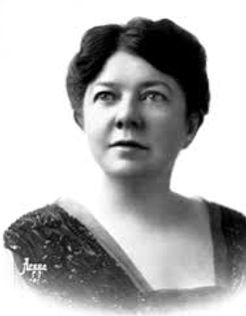Second Grade!
Our Second Grade music goals are
to learn how to read, decode, write and perform simple melodies and rhythms
using the notes Do, Re, Mi and So in duple meters.
Class Blog
Unit 5
Orff
Beginning in February we will be learning music using the exploratory Orff methodology. We will be exploring Rhythm compositions, drumming, and singing, then learning how to transfer our ideas onto mallet instruments. We will likely continue our mallet exploration into March where we can explore improvisation, accompaniment and compositional melodic ideas.
Composer of the Month
Florence Price
-
We are studying African American composer Florence Beatrice Price in honor of Black History Month.
-
born Florence Beatrice Smith on April 9, 1887 in Little Rock, Arkansas,– and died June 3, 1953 in Chicago Illinois
-
She is considered the first important African American woman composer. She was the first African-American woman to be recognized as a symphonic composer, and the first to have a composition played by a major orchestra.
-
She was one of three children. Her father was a dentist and her mother was a piano teacher, and gave Florence her first few years of piano lessons.
-
She had her first piano performance at the age of four and went on to have her first composition published at the age of 11.
-
By the time she was 14, Florence had graduated from Capitol Hill High School and was Valedictorian of her graduating class!
-
When she was 16 she enrolled in the New England Conservatory of Music in Boston. She had 2 majors - Organ performance and piano teaching and graduated in 1906.
-
Ms. Price taught in Arkansas briefly before moving to Atlanta, Georgia, in 1910, where she became the head of Clark Atlanta University's music department.
-
In 1912, she married Thomas J. Price, a lawyer, and moved back to Little Rock, Arkansas, and later to Chicago.
-
Financial struggles led to a divorce in 1931, and Florence became a single mother to her two daughters. To make ends meet, she worked as an organist for silent film screenings and composed songs for radio ads under a pen name.
-
In 1932, Price submitted compositions for Wanamaker Foundation Awards. She won first prize with her Symphony in E minor, and third for her Piano Sonata, earning her a $500 prize.
-
The world famous Chicago Symphony Orchestra (made up of all white men), premiered her Symphony in E minor at the Chicago World’s fair on June 15, 1933, making Price’s piece the first composition by an African-American woman to be played by a major orchestra!
-
Price made considerable use of characteristic African American melodies and rhythms in many of her works.
-
Price was inducted into the American Society of Composers, Authors, and Publishers in 1940 for her work as a composer.
-
She composed over 300 works by the time she retired from composing in 1949
On June 3, 1953, Price died from a stroke in Chicago, Illinois.
Unit 4
Programattic Music
Over the next few weeks of January we will be learning about all of the different ways that music can tell a story, or paint a picture - without using any words!
We will listen to classical music and write stories or draw pictures to go with them, and study ballets and other forms of programmatic music while learning aobut the stories that were intended for each specific song.
Unit 3
Christmas!
The second grade class is currently busy preparing for the Christmas Program! They are learning the songs "I'm Getting Nuttin' for Christmas", and "C-H-R-I-S-T-M-A-S", and have composed an instrumental song to round off their portion of the concert! The second graders have all composed rythms and have used their knowledge of Music Form to arrange the rhythms into a class song featuring Soli, Tutti, and Improvisational sections! They are very excited to share their class composition with everyone at the Christmas Program!
Unit 2
Rhythm
In the 2nd week of October the 2st grade class began their rhythm/composition unit. For the next several weeks the 2st graders will be learning how to read, recognize, clap and compose using quarter notes, eighth note pairs and sixteenth note sets. We are learning these rhythms by assigning each rhythm a Halloween theme.
Ghost = quarter note and gets 1 clap, Werewolf = eighth notes and gets 2 claps, and Jackolantern = sixteenth notes and gets 4 claps (count the syllables in each word to see how they line up!)
Students are working in groups of 4 to arrange their spooky rhythm cards into 4 beat patterns, and then performing their rhythms for the class.
By the end of the unit we will have combined each group's rhythms to create one giant class Rondo rhythm, and will maybe even add percussion instruments as well!
I intend for this project to grow over several weeks, and we may even turn it into something exciting enough to perform at the Christmas concert!
Unit 1
Movement
This week the second graders will begin a movement unit. They will learn how to move their bodies along different pathways, at different levels, and how to use their bodies to create shapes in space. They will learn how to move with music while matching tempo and dynamics and will practice these skills to a steady beat as well as free-flowing.


